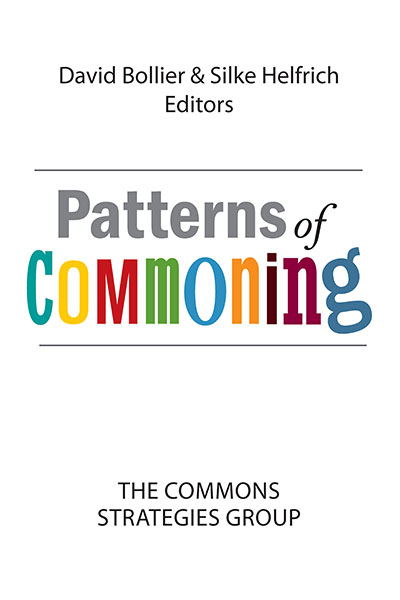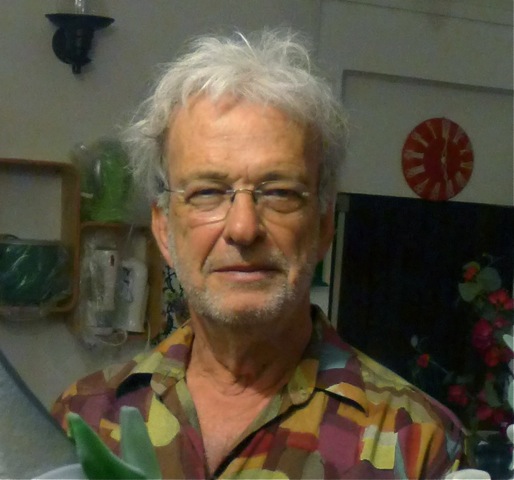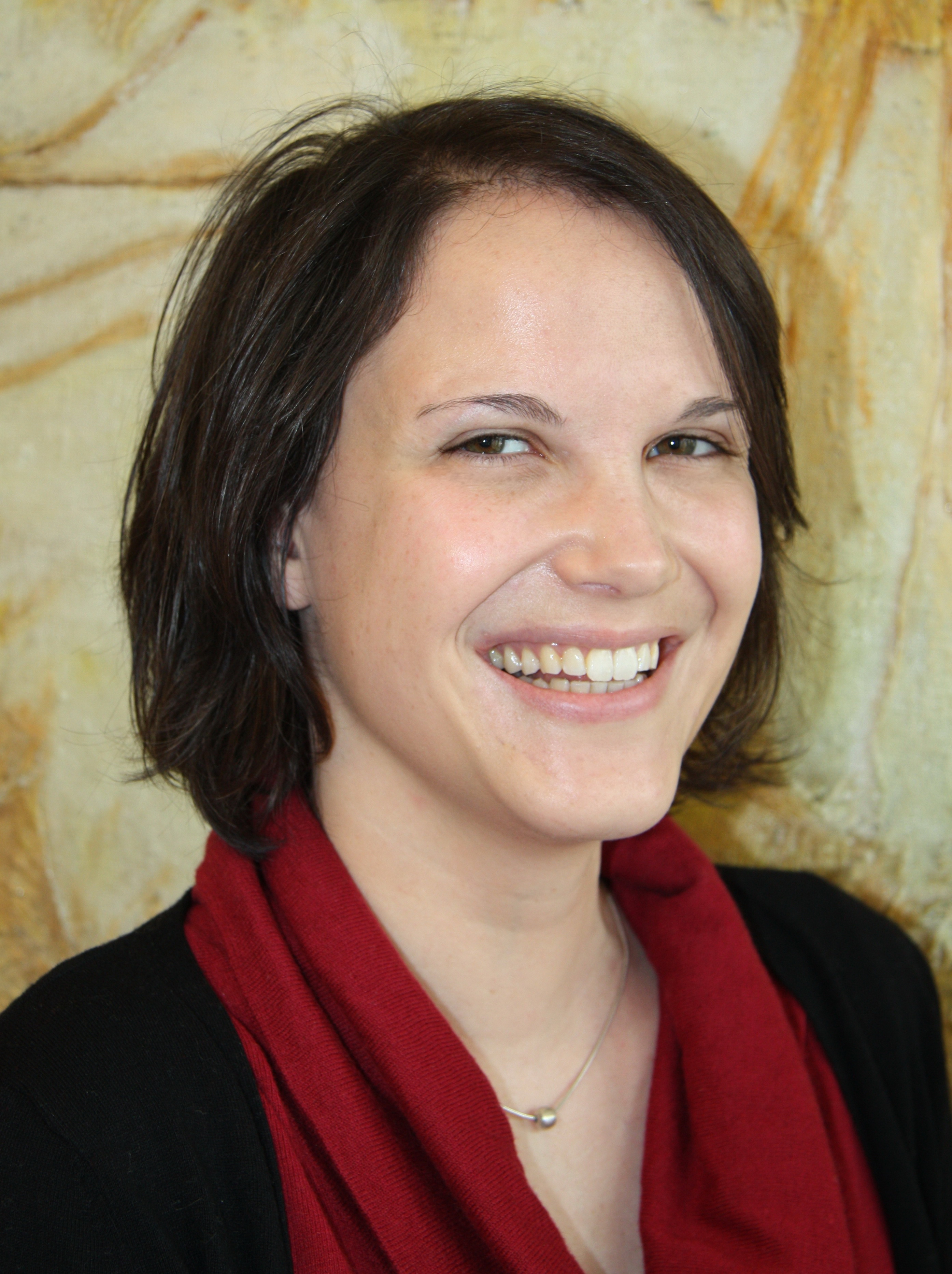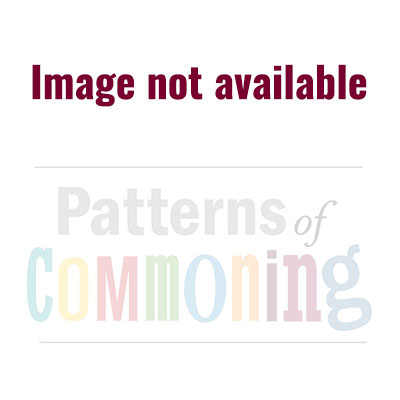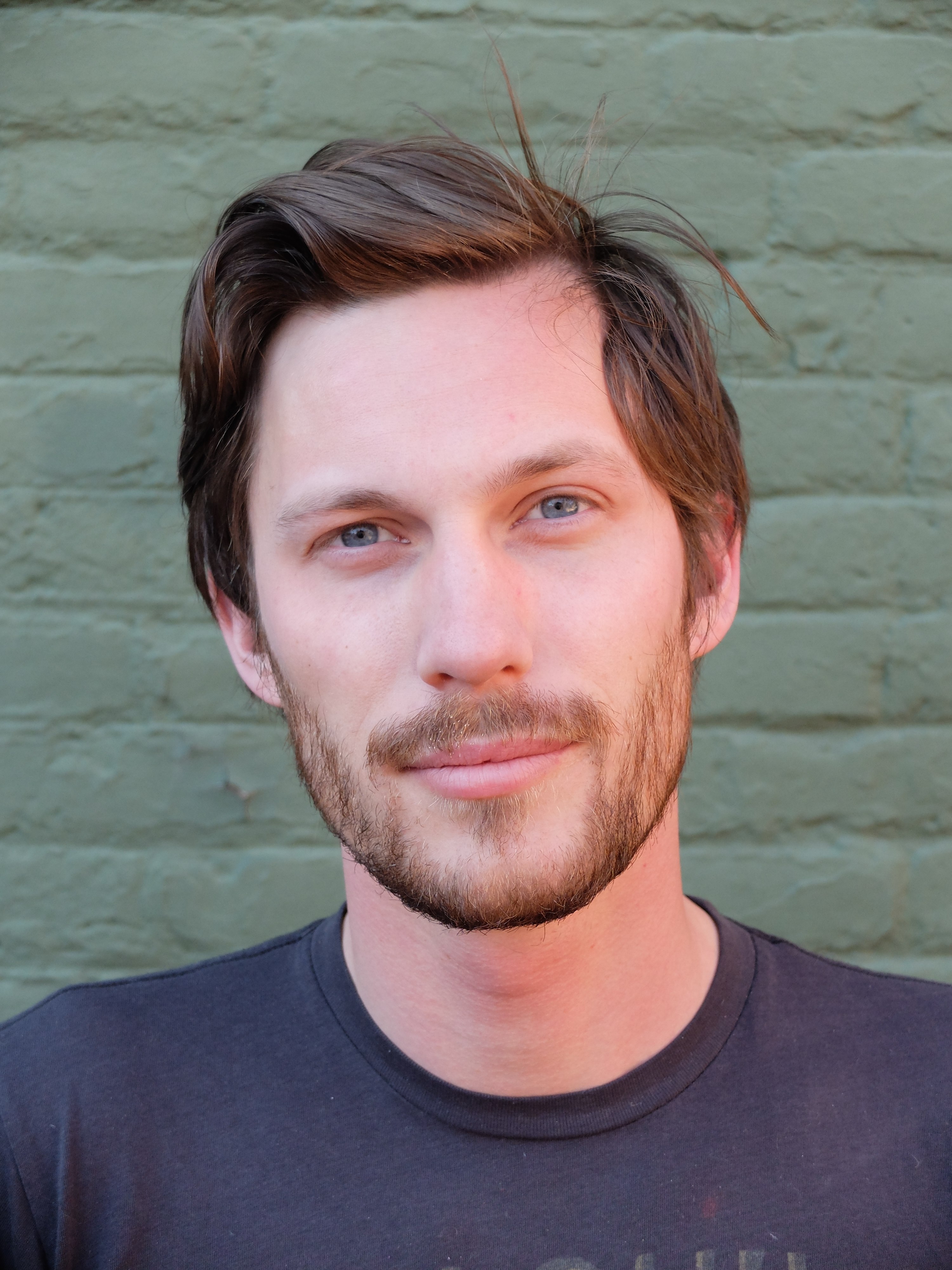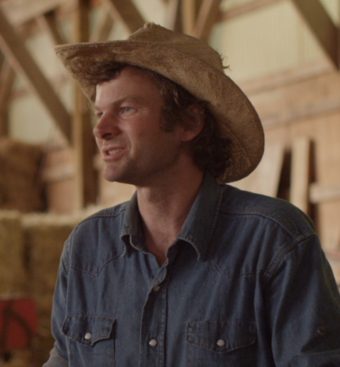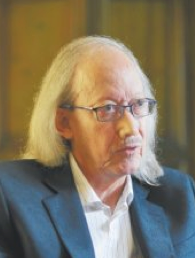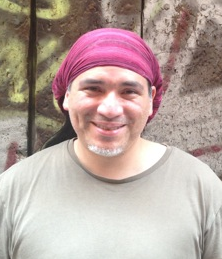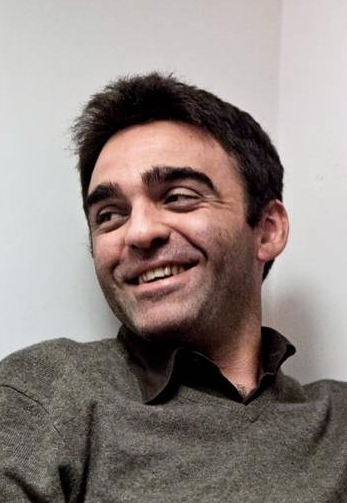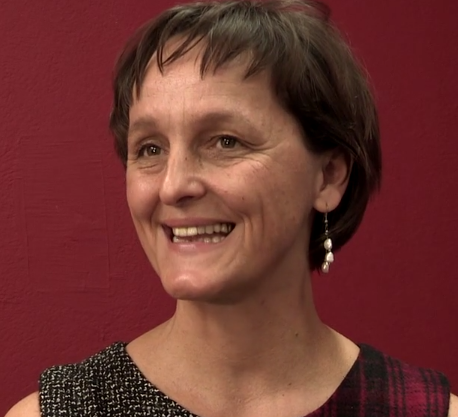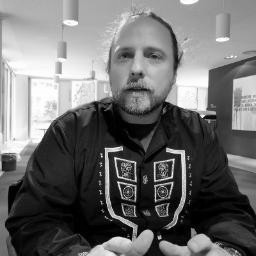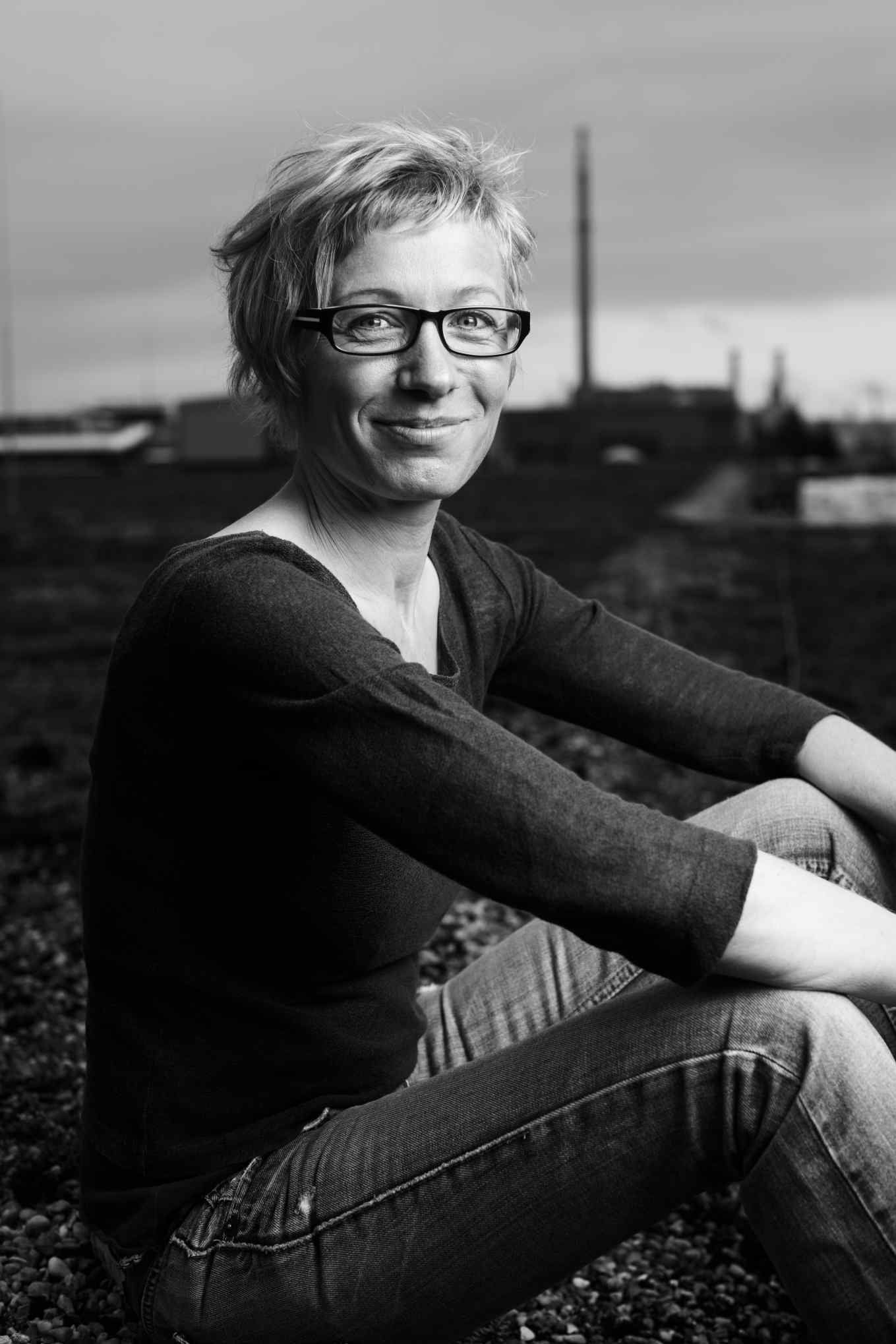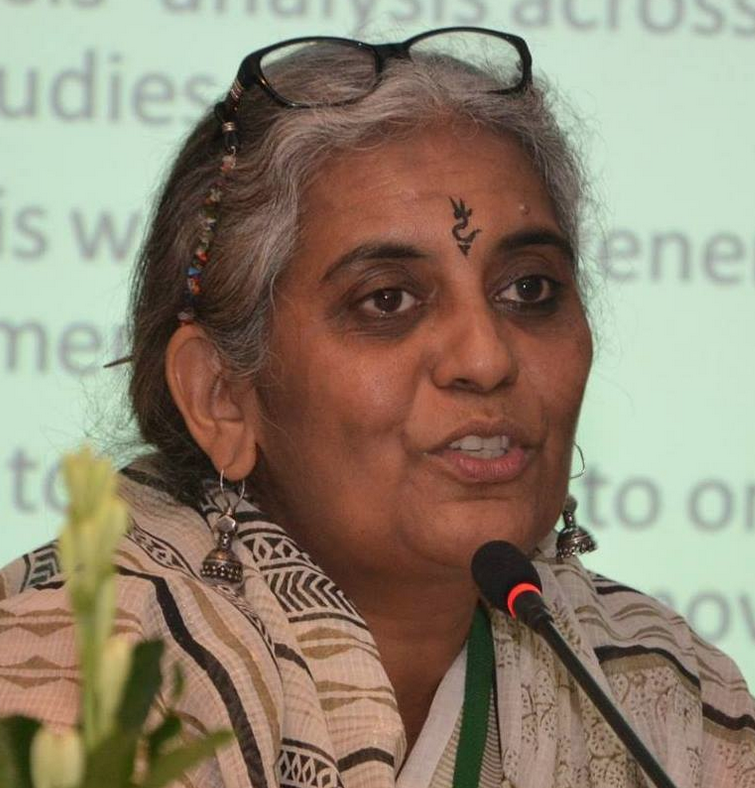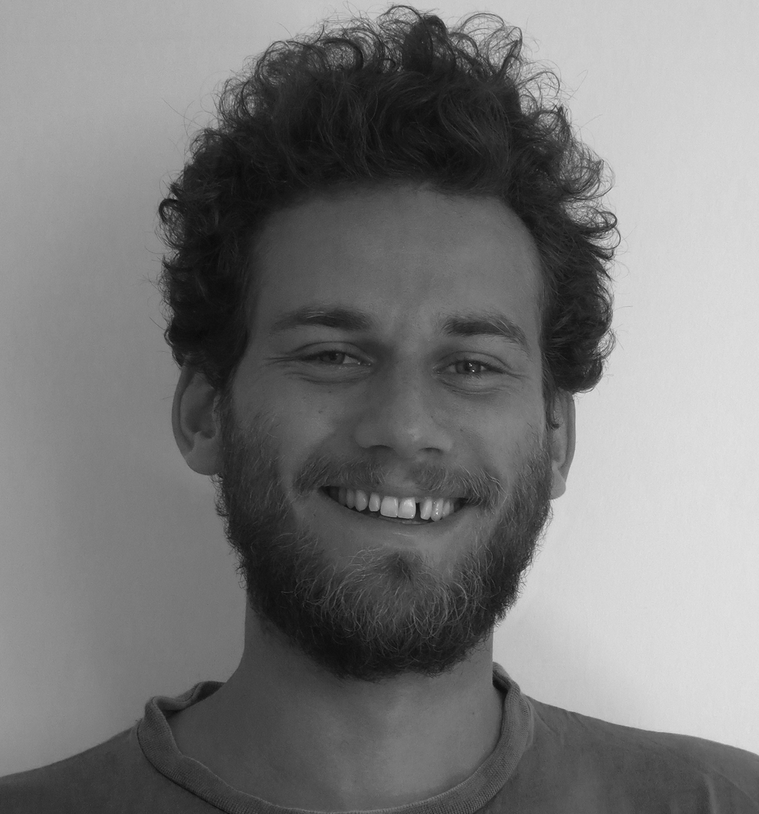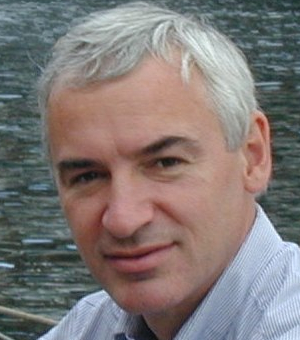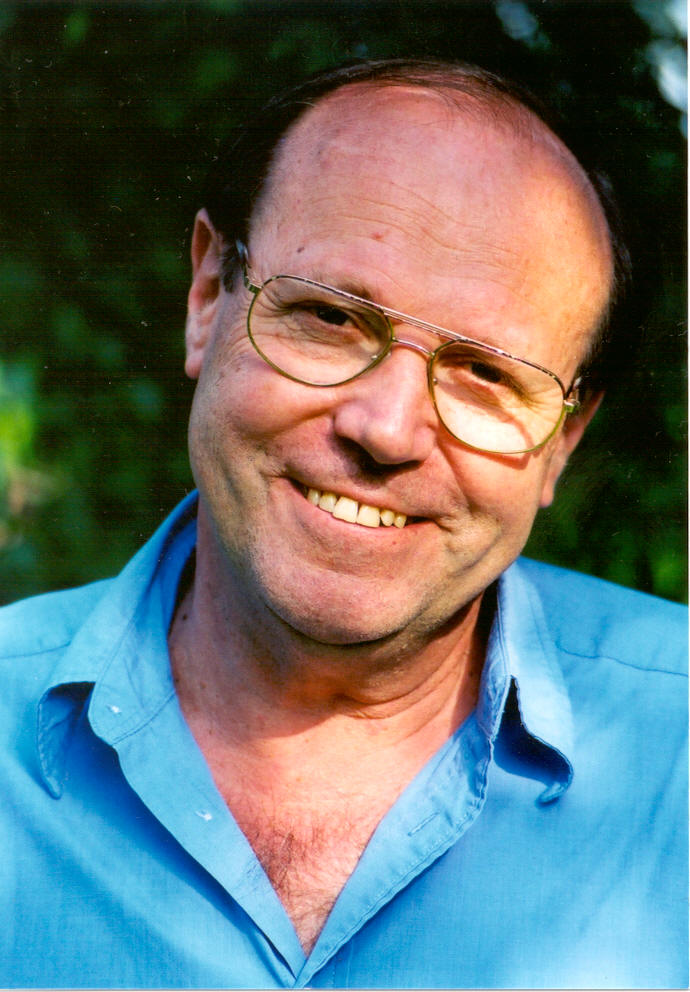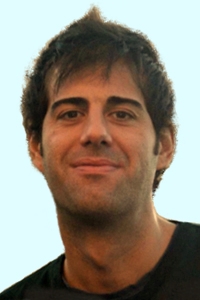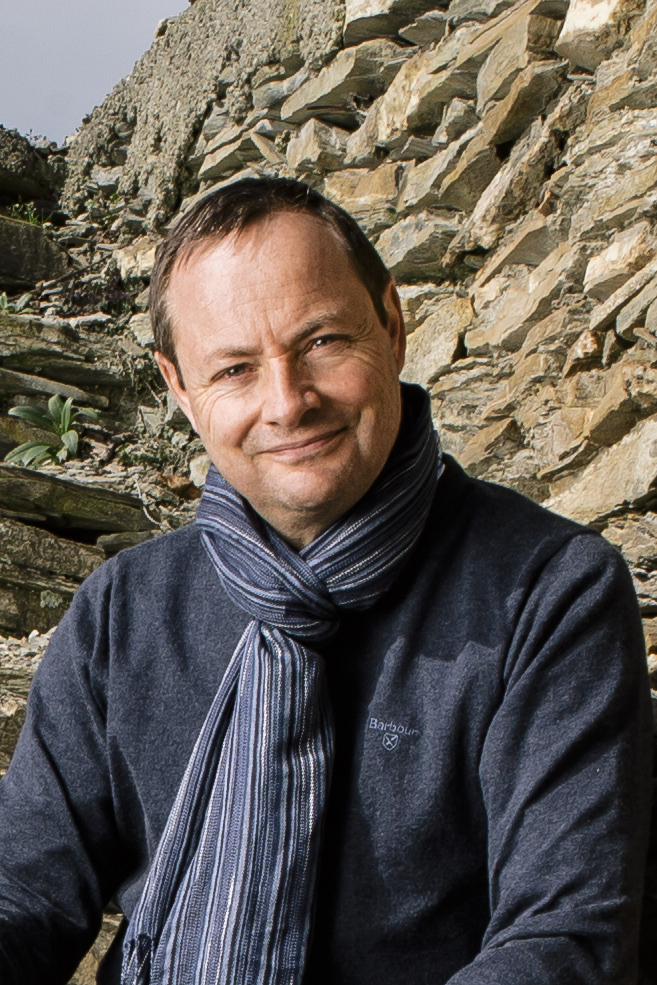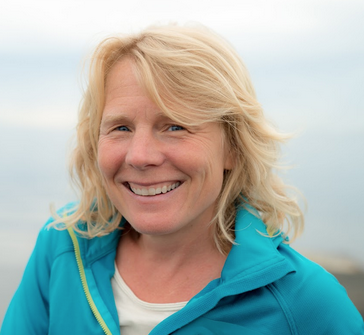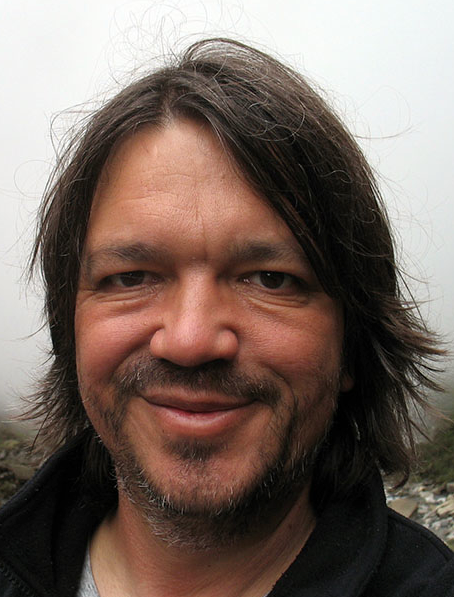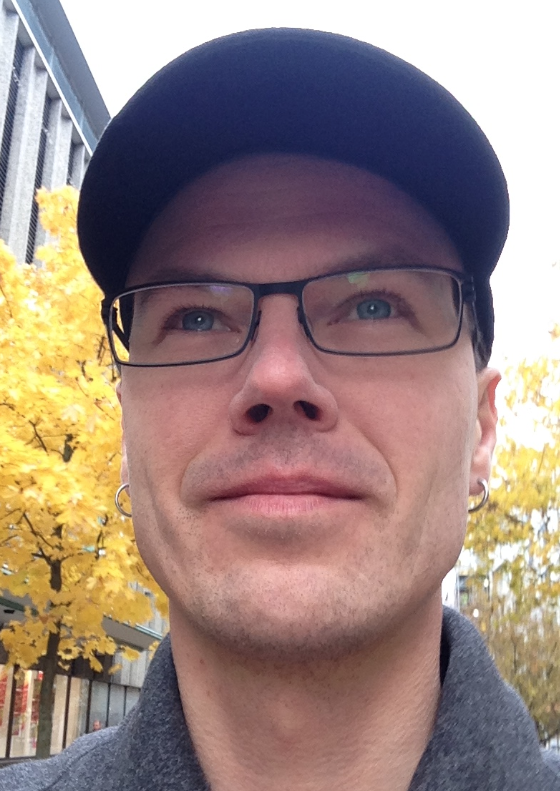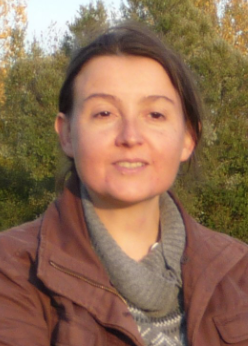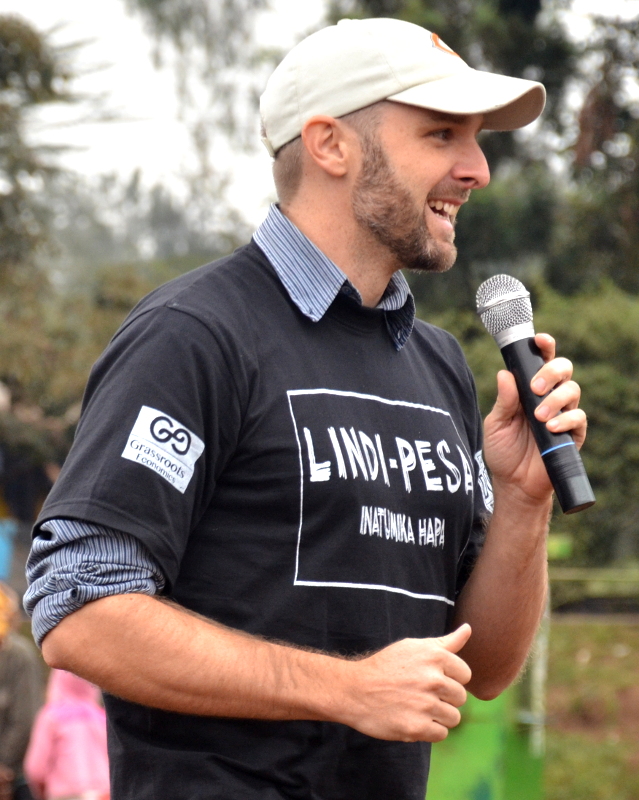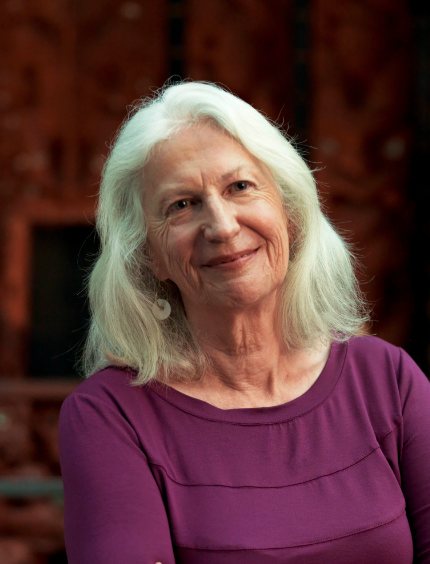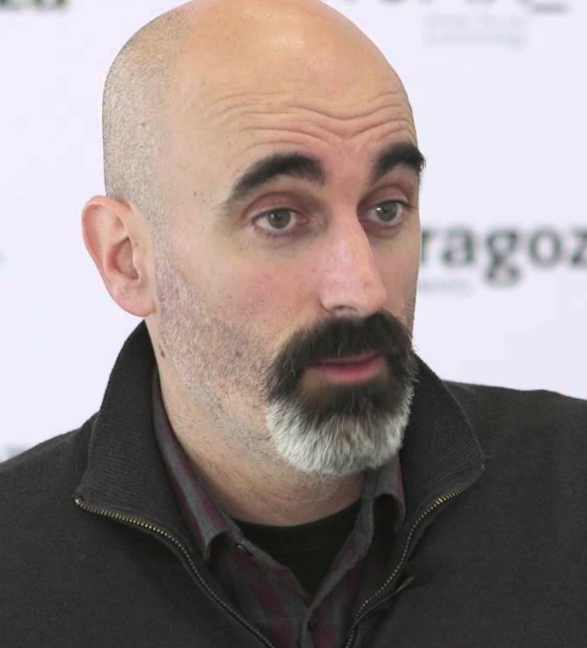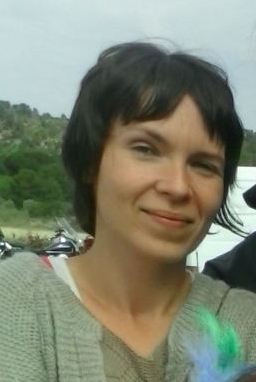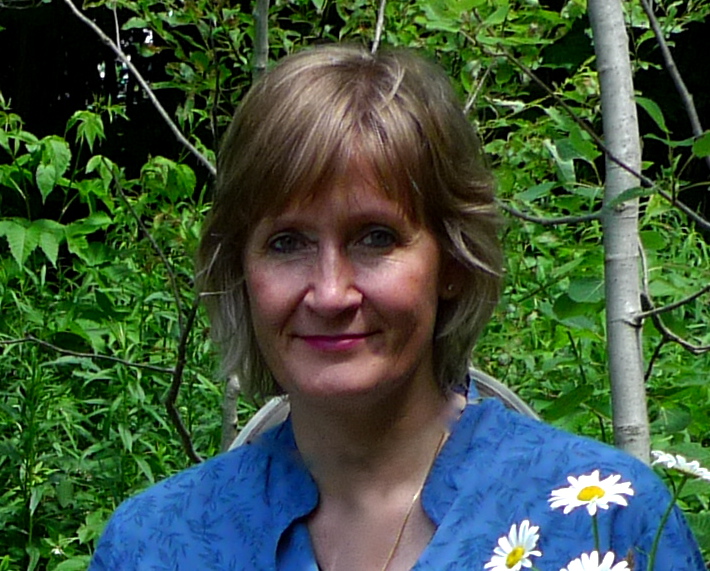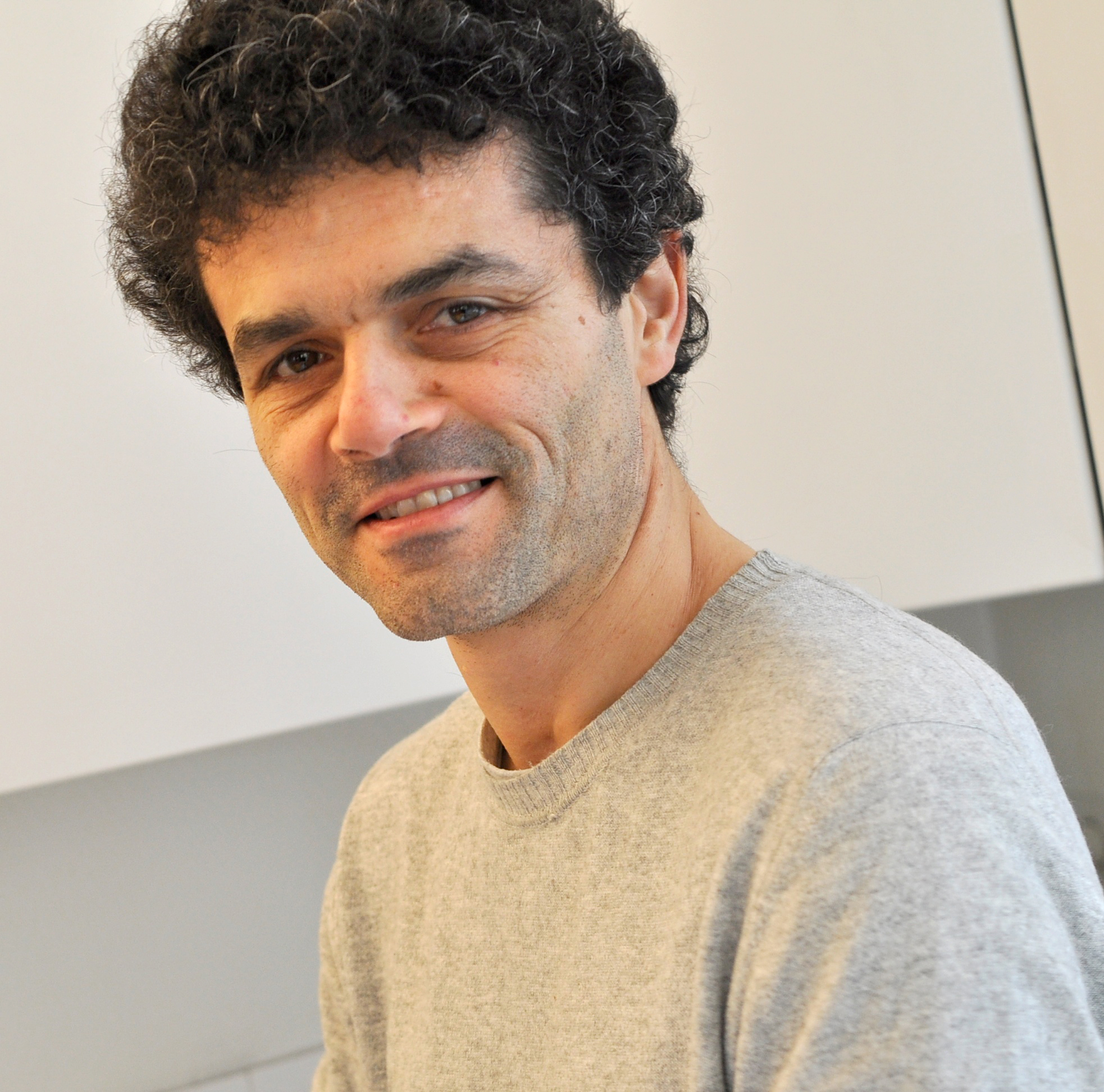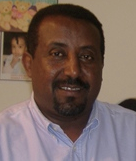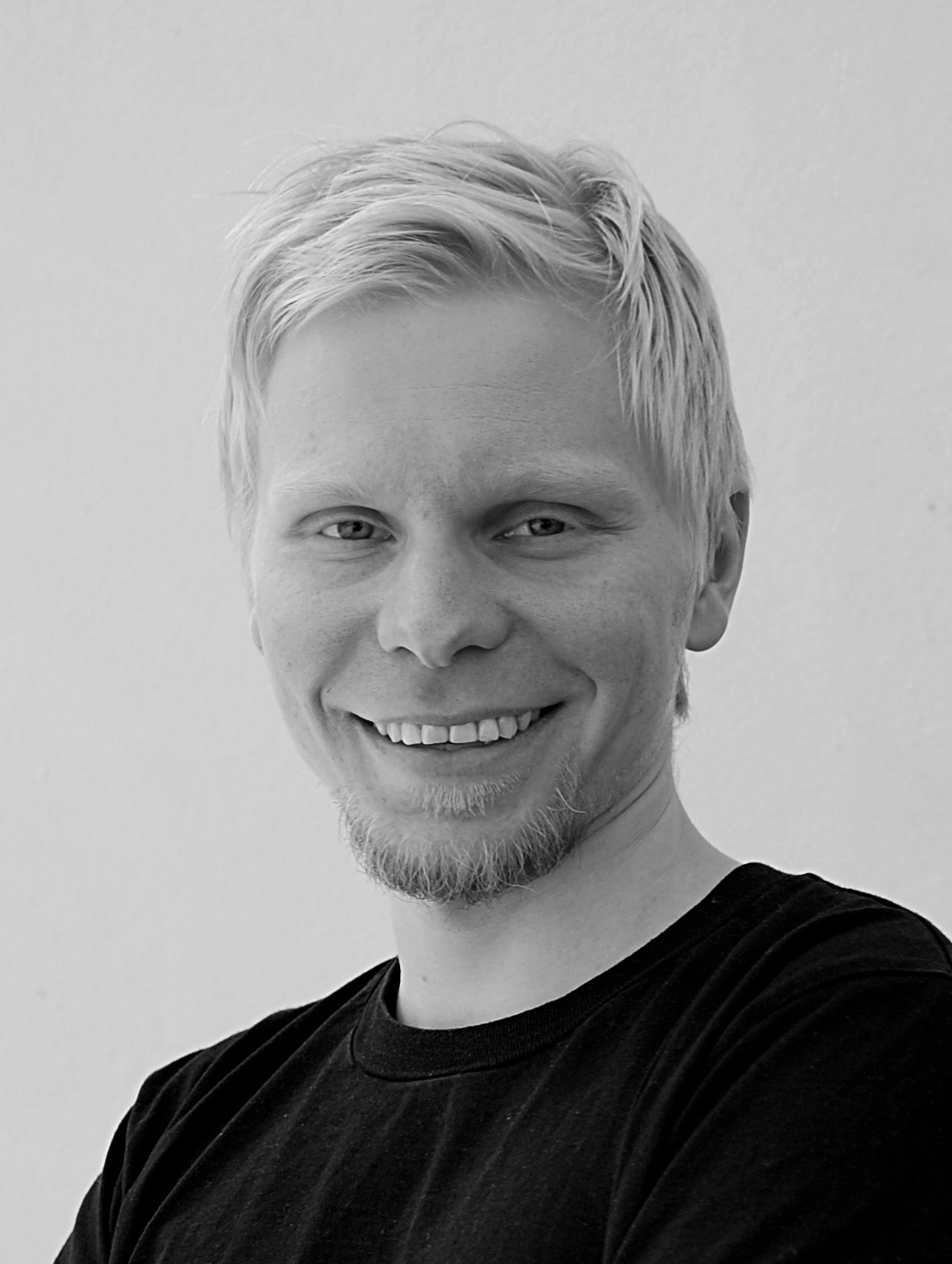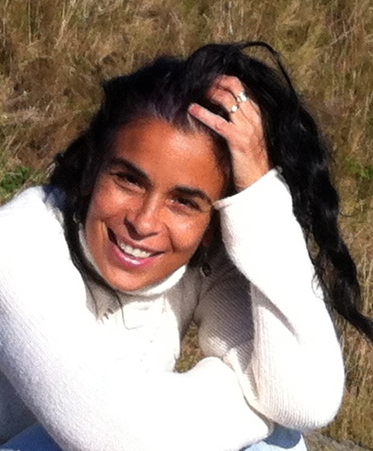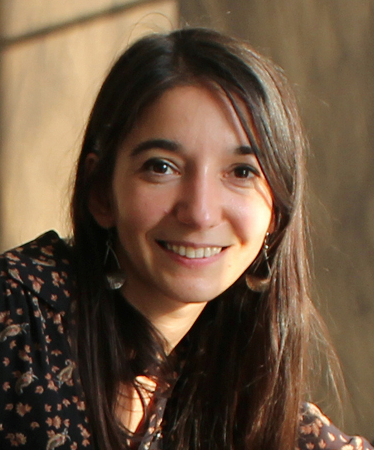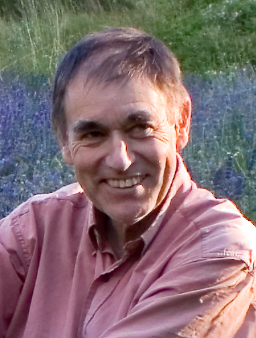Alain Ambrosi (Canada) is a designer and producer of intercultural projects, independent researcher, author, videographer and producer of the Remix The Commons Project.
Patterns of
COMMONING
Commons in the Pluriverse
By Arturo Escobar
I. Commons and Worlds
Commons exist within worlds. Long before private property showed its ugly head and started to devour territories, people created what today we call commons as a principal strategy to enact their worlds. These worlds, made up of human and nonhuman, living and nonliving, material and spiritual beings and forms woven together in inextricably entangled ways, have continued to persevere nevertheless.
Colombian sociologist Orlando Fals Borda (1984) describes how the introduction of barbwire for cattle ranching in the Caribbean Coast region of Colombia at the dawn of the twentieth century interrupted flows of people and animals, regularized landscapes and even desiccated wetlands and lagoons in some areas. Despite these challenges, the region’s people had a resilient culture and strove time and again to reconstitute their commons. They sought to recreate the sensual wholeness that Raoul Vaneigem describes as a casualty of the economy:
The economy is everywhere that life is not….Economics is the most durable lie of the approximately ten millennia mistakenly accepted as history….With the intrusion of work the body loses its sensual wholeness…work existed from the moment one part of life was devoted to the service of the economy while the other was denied and repressed (Vaneigem 1994:17, 18, 27, 28).
And so, and against all odds, and like many other people throughout the world, the Caribbean people described by Fals go on enacting a world of their own, creating with every act and every practice worlds in which the commons – indeed, commoning – still find a breathing space and at times even the chance to flourish. Commoners are like that. They refuse to abide by the rules of the One-World World (OWW) that wishes to organize everything in terms of individuals, private property, markets, profits, and a single notion of the Real. OWW seeks to banish nature and the sacred from the domain of an exclusively human-driven life (Law 2011).
Those who insist on commoning defy this civilization of the One-World (capitalist, secular, liberal, patriarchal, white) that arrogates for itself the right to be “the world” and that reduces all other worlds to nonexistence or noncredible alternatives to what exist (Santos 2002). Vaneigem is again instructive:
Civilization was identified with obedience to a universal and eternal market relationship….The commodity is the original form of pollution….Nature cannot be liberated from the economy until the economy has been driven out of human life….(From the moment the market system minimizes the fruits of the earth by seeing them only in terms of the fruits of labor, the market system treats nature as its slave)… As the economy’s hold weakens, life is more able to clear a path for itself (Vaneigem 1994).
This reality has always been evident to most of the world’s peoples-territory (pueblos-territorio).1 An activist from the Process of Black Communities of Colombia said: “The territory has no price. Our ancestors cared for the territory with a great sense of belonging. This is why we have to create our economies not from the outside coming in but the other way around: from the inside going outwards.”2 The world this activist talks about has persevered, again despite all odds. Let us visit this this world for a brief moment.
II. Yurumanguí: Introducing Relational Worlds
In Colombia’s southern Pacific rainforest region, picture a seemingly simple scene from the Yurumanguí River, one of the many rivers that flow from the Western Andean mountain range towards the Pacific Ocean, an area inhabited largely by Afrodescendant communities.3 A father and his six-year old daughter paddling with their canaletes (oars) seemingly upstream in their potrillos (local dugout canoes) at the end of the afternoon, taking advantage of the rising tide; perhaps they are returning home after having taken their harvested plantains and their catch of the day to the town downstream, and bringing back some items they bought at the town store – unrefined cane sugar, cooking fuel, salt, notebooks for the children, or what have you.
On first inspection, we may say that the father is “socializing” his daughter into the correct way to navigate the potrillo, an important skill as life in the region greatly depends on the ceaseless going back and forth in the potrillos through rivers, mangroves and estuaries. This interpretation is correct in some ways; but something else is also going on. As locals are wont to say, speaking of the river territory, acá nacimos, acá crecimos, acá hemos conocido qué es el mundo (“Here we were born, here we grew up, here we have known what the world is”). Through their nacer~crecer~conocer they enact the manifold practices through which their territories/worlds have been made since they became libres (i.e., free, not enslaved peoples) and became entangled with living beings of all kinds in these forest and mangrove worlds.
Let us travel to this river and immerse ourselves deeply within it and experience it with the eyes of relationality; an entire way of worlding emerges for us. Looking attentively from the perspective of the manifold relations that make this world what it is, we see that the potrillo was made out of a mangrove tree with the knowledge the father received from his predecessors; the mangrove forest is intimately known by the inhabitants who traverse with great ease the fractal estuaries it creates with the rivers and the always moving sea; we begin to see the endless connections keeping together and always in motion this intertidal “aquatic space,” (Oslender 2008) including connections with the moon and the tides that enact a nonlinear temporality. The mangrove forest involves many relational entities among what we might call minerals, mollusks, nutrients, algae, microorganisms, birds, plant, and insects – an entire assemblage of underwater, surface and areal life. Ethnographers of these worlds describe it in terms of three non-separate worlds – el mundo de abajo or infraworld; este mundo, or the human world; and el mundo de arriba, or spiritual/supraworld. There are comings and goings between these worlds, and particular places and beings connecting them, including “visions” and spiritual beings. This entire world is narrated in oral forms that include storytelling, chants and poetry.
This dense network of interrelations may be called a “relational ontology.” The mangrove-world, to give it a short name, is enacted minute by minute, day by day, through an infinite set of practices carried out by all kinds of beings and life forms, involving a complex organic and inorganic materiality of water, minerals, degrees of salinity, forms of energy (sun, tides, moon, relations of force), and so forth. There is a rhizome “logic” to these entanglements, a logic that is impossible to follow in any simple way, and very difficult to map and measure, if at all; it reveals an altogether different way of being and becoming in territory and place. These experiences constitute relational worlds or ontologies. To put it abstractly, a relational ontology of this sort can be defined as one in which nothing preexists the relations that constitute it. Said otherwise, things and beings are their relations; they do not exist prior to them.
As the anthropologist from Aberdeen Tim Ingold says, these “worlds without objects” (2011:131) are always in movement, made up of materials in motion, flux and becoming; in these worlds, living beings of all kinds constitute each other’s conditions for existence; they “interweave to form an immense and continually evolving tapestry.” (2011:10) Going back to the river scene, one may say that “father” and “daughter” get to know their local world not through distancing reflection but by going about it, that is, by being alive to their world. These worlds do not require the divide between nature and culture in order to exist – in fact, they exist as such only because they are enacted by practices that do not rely on such divide. In a relational ontology, “beings do not simply occupy the world, they inhabit it, and in so doing – in threading their own paths through the meshwork – they contribute to their ever-evolving weave.” (Ingold 2011: 71) Commons exist in these relational worlds, not in worlds that are imagined as inert and waiting to be occupied.
Even if the relations that keep the mangrove-world always in a state of becoming are always changing, to disrupt them significantly often results in the degradation of such worlds. Such is the case with industrial shrimp farming schemes and oil palm plantations for agrofuels, which have proliferated in many tropical regions of the world. These market systems, often built at the expense of mangrove and humid forest lands, aim to transform “worthless swamp” into agroindustrial complexes (Ogden 2012; Escobar 2008).
Here, of course, we find many of the operations of the One-World World at play: the conversion of everything that exists in the mangrove-world into “nature” and “nature” into “resources”; the effacing of the life-enabling materiality of the entire domains of the inorganic and the nonhuman, and its treatment as “objects” to be had, destroyed or extracted; and linking the forest worlds so transformed to “world markets,” to generate profit. In these cases, the insatiable appetite of the One-World World spells out the progressive destruction of the mangrove-world, its ontological capture and reconversion by capital and the State (Deleuze and Guattari 1987). The OWW, in short, denies the mangrove-world its possibility of existing as such. Local struggles constitute attempts to (re)establish some degree of symmetry by seeking to influence the partial connections that the mangrove-worlds inevitably maintain with the OWW.
III. Territoriality, Ancestrality and Worlds
Elders and young activists in many territorial communities worldwide (including increasingly in urban areas) eloquently express why they defend their worlds even at the price of their lives. An activist from the Afrodescendant community of La Toma of Colombia’s southwest, which has struggled against gold mining since 2008, said: “It is patently clear to us that we are confronting monsters such as transnational corporations and the State. Yet nobody is willing to leave her/his territory; I might get killed here but I am not leaving.”4
Such resistance takes place within a long history of domination and resistance, and this is essential for understanding commoning as an ontological political practice. La Toma communities, for instance, have knowledge of their continued presence in the territory since the first half of the seventeenth century. It’s an eloquent example of what activists call “ancestrality,” referring to the ancestral mandate that inspires today’s struggles and that persists in the memory of the elders, amply documented by oral history and scholars. (Lisifrey et al. 2013) This mandate is joyfully celebrated in oral poetry and song: Del Africa llegamos con un legado ancestral; la memoria del mundo debemos recuperar (“From Africa we arrived with an ancestral legacy; the memory of our world we need to bring back”).5 Far from an intransigent attachment to the past, ancestrality stems from a living memory that orients itself to a future reality that imagines, and struggles for, conditions that will allow them to persevere as a distinct, living mode of existence.
Within relational worlds, the defense of territory, life and the commons are one and the same. This is the ontological dimension of commoning. To this extent, this chapter’s argument can be stated as follows: The perseverance of communities, commons, and movements and the struggles for their defense and reconstitution can be described as ontological. At its best and most radical, this is particularly true for those struggles that incorporate explicitly ethno-territorial dimensions and involve resistance and the defense and affirmation of commons.
Conversely, whereas the occupation of territories implies economic, technological, cultural, ecological, and often armed aspects, its most fundamental dimension is ontological. From this perspective, what occupies territories and commons is a particular ontology, that of the universal world of individuals and markets (the OWW) that attempts to transform all other worlds into one; this is another way of interpreting the historical enclosure of the commons. By interrupting the neoliberal globalizing project of constructing One World, many indigenous, Afrodescendant, peasant, and poor urban communities are advancing ontological struggles. The struggle to maintain multiple worlds – the pluriverse – is best embodied by the Zapatista dictum, Un mundo donde quepan muchos mundos, a world where many worlds fit. Many of these worlds can thus be seen as struggles over the pluriverse.
Another clear case of ontological occupation of territories comes from the southernmost area in the Colombian Pacific, around the port city of Tumaco. Here, since the early 1980s, the forest has been destroyed and communities displaced to give way to oil palm plantations. Nonexistent in the 1970s, by the mid-1990s they had expanded to over 30,000 hectares. The monotony of the plantation – row after row of palm as far as you can see, a green desert of sorts – replaced the diverse, heterogeneous and entangled world of forest and communities.
There are two important aspects to remark from this dramatic change: first, the “plantation form” effaces the socioecological relations that maintain the forest-world. The plantation emerges from a dualist ontology of human dominance over so-called “nature” understood as “inert space” or “resources” to be had, and can thus be said to be the most effective means for the ontological occupation and ultimate erasure of the local relational world. Conversely, the same plantation form is unthinkable from the perspective of the forest-world; within this world, forest utilization and cultivation practices take on an entirely different form, closer to agroforestry; even the landscape, of course, is entirely different. Not far from the oil palm plantations, industrial shrimp farming was also busy in the 1980s and 1990s transforming the mangrove-world into disciplined succession of rectangular pools, “scientifically” controlled. A very polluting and destructive industry especially when constructed on mangrove swamps, this type of shrimp farming constitutes another clear example of ontological occupation and politics at play (Escobar 2008).
IV. Commons Beyond Development: Commoning and Pluriversal Studies
The ontological occupation of commons and worlds just described often takes place in the name of development. Development and growth continue to be among the most naturalized concepts in the social and policy domains. The very idea of development, however, has been questioned by cultural critics since the mid-1980s; they questioned the core assumptions of development, including growth, progress, and instrumental rationality. These critiques came of age with the publication in 1992 of a collective volume, The Development Dictionary. The book started with the startling claim: “The last forty years can be called the age of development. This epoch is coming to an end. The time is ripe to write its obituary.” (Sachs 1992; Rist 1997) If development was dead, what would come after? Some started to talk about a “post-development era” in response to this question (Rahnema 1997). Degrowth theorists, notably Latouche (2009), contributed to disseminate this perspective in the North.
Postdevelopment advocates argued that it is possible for activists and policymakers to think about the end of development, emphasizing the notion of alternatives to development, rather than development alternatives. The idea of alternatives to development has become more concrete in South America in recent years with the notions of Buen Vivir (good living, or collective well-being according to culturally appropriate ways) and the rights of Nature. Defined as a holistic view of social life that no longer gives overriding centrality to the economy, Buen Vivir (BV) “constitutes an alternative to development, and as such it represents a potential response to the substantial critiques of postdevelopment” (Gudynas and Acosta 2011; Acosta and Martínez 2009). Very succinctly, Buen Vivir grew out of indigenous struggles for social change waged by peasants, Afrodescendants, environmentalists, students, women and youth. Echoing indigenous ontologies, BV implies a different philosophy of life which subordinates economic objectives to ecological criteria, human dignity and social justice. Debates about the form BV might take in modern urban contexts and other parts of the world, such as Europe, are beginning to take place. Degrowth, commons and BV are “fellow travelers” in this endeavor.
Buen Vivir resonates with broader challenges to the “civilizational model” of globalized development. The crisis of the Western modelo civilizatorio is invoked by many movements as the underlying cause of the current crisis of climate, energy, poverty and meaning. This emphasis is strongest among ethnic movements, yet it is also found, for instance, in peasant networks such as Via Campesina for which only a shift toward agroecological food production systems can lead us out of the climate and food crises. Originally proposed by the Centro Latinoamericano de Ecología Social (CLAES) in Montevideo and closely related to the “transitions to post-extractivism” framework,Buen Vivir has become an important intellectual-activist debate in many South American countries (Alayza and Gudynas 2011; Gudynas 2011; Massuh 2012). The point of departure is a critique of the intensification of extractivist models based on large-scale mining, hydrocarbon exploitation or extensive agricultural operations, particularly for agrofuels such as soy, sugar cane or oil palm. Whether they take the form of conventional – often brutal – neoliberal extractivist policies in countries like Colombia, Perú or México, or the neoextractivism of the center-left regimes, these models are legitimized as efficient growth strategies.
This implies a transition from One-World concepts such as “globalization” to concepts centered on the pluriverse as made up of a multiplicity of mutually entangled and co-constituting but distinct worlds (Blaser, de la Cadena and Escobar 2013; Blaser 2010). There are many signs that suggest that the One-World doctrine is unraveling. The growing visibility of struggles to defend mountains, landscapes, forests and so forth by appealing to a relational (non-dualist) and pluriversal understanding of life is a manifestation of the OWW’s crisis. Santos has powerfully described this conjuncture with the following paradox: We are facing modern problems for which there are no longer modern solutions (Santos 2002:13).
This conjuncture defines a rich context for commons studies from the perspective of pluriversal studies: on the one hand, the need to understand the conditions by which the one world of neoliberal globalization continues to maintain its dominance; and on the other hand, the (re)emergence of projects based on different ways of “worlding” (that is, the socioecological processes implied in building collectively a distinctive reality or world), including commoning, and how they might weaken the One-World project while widening their spaces of (re)existence.
The notion of the pluriverse, it should be made clear, has two main sources: theoretical critiques of dualism, and the perseverance of pluriversal and non-dualist worlds (more often known as “cosmovisions”) that reflect a deeply relational understanding of life. Notable examples include Muntu and Ubuntu in parts of Africa, the Pachamamaor Mama Kiwe among South American indigenous peoples, Native US and Canadian cosmologies, and even the entire Buddhist philosophy of mind. Examples also exist within the West as “alternative Wests” or nondominant forms of modernity. Some of the current struggles going on in Europe over the commons, energy transitions, and the relocalization of food, for instance, could be seen as struggles to reconnect with the stream of life. They also constitute forms of resistance against the dominant ontology of capitalist modernity. Worldwide, the multiple struggles for the reconstruction of communal spaces and for reconnecting with nature are giving rise to political mobilizations for the defense of the relational fabric of life – for instance, for the recognition of territorial rights, local knowledges, and local biodiversity. Struggles over the commons are key examples of such activation.
V. The Commons and Transitions Towards the Pluriverse
Economically, culturally, and militarily, we are witnessing a renewed attack on anything collective; land grabbing and the privatization of the commons (including sea, land, even the atmosphere through carbon markets) are signs of this attack. This is the merciless world of the global 10 percent, foisted upon the 90 percent and the natural world with a seemingly ever-increasing degree of virulence and cynicism. In this sense, the world created by the OWW has brought about untold devastation and suffering. The remoteness and separation it effects from the worlds that we inevitably weave with other earth-beings are themselves a cause of the ecological and social crisis (Rose 2008). These are aspects of what Nonini (2007) has insightfully described as “the wearing-down of the commons.”
The emergence, over the past decade, of an array of discourses on the cultural and ecological transitions necessary to deal with the interrelated crises of climate, food, energy and poverty, is powerful evidence that the dominant model of social life is exhausted. In the global North and the global South, multiple transition narratives and forms of activism are going beyond One-World strategic solutions (e.g., “sustainable development” and the “green economy”) to articulate sweeping cultural and ecological transitions to different societal models. These Transition discourses (TDs) are emerging today with particular richness, diversity and intensity. Those writing on the subject are not limited to the academy; in fact, the most visionary TD thinkers are located outside of it, even if most engage with critical currents in the academy. TDs are emerging from a multiplicity of sites, principally social movements and some NGOs, from emerging scientific paradigms and academic theories, and from intellectuals with significant connections to environmental and cultural struggles. TDs are prominent in several fields, including those of culture, ecology, religion and spirituality, alternative science (e.g., complexity), futures studies, feminist studies, political economy, and digital technologies and the commons.
The range of TDs can only be hinted at here. In the North, the most prominent include degrowth; a variety of transition initiatives (TIs); the Anthropocene; forecasting trends (e.g., Club of Rome, Randers 2012); and the movement towards commons and the care economy as a different way of seeing and being (e.g., Bollier 2014). Some approaches involving interreligious dialogues and UN processes are also crafting TDs. Among the explicit TIs are the Transition Town Initiative (TTI, UK), the Great Transition Initiative (GTI, Tellus Institute, US), the Great Turning, (Macy and Johnstone 2012) the Great Work or transition to an Ecozoic era, (Berry 1999) and the transition from The Enlightenment to an age of Sustainment. (Fry 2012) In the global South, TDs include the crisis of civilizational model, postdevelopment and alternatives to development, Buen Vivir, communal logics and autonomía, subsistence and food sovereignty, and transitions to post-extractivism. While the features of the new era in the North include post-growth, post-materialist, post-economic, post-capitalist and post-dualist, those for the south are expressed in terms of post-development, post/non-liberal, post/non-capitalist, and post-extractivist. (Escobar 2011)
VI. Conclusion: Commoning and the Commons as Umbrella and Bridge Discourses
What follows is a provisional exploration, as a way to conclude, on the relation between commoning and the commons and political ontology and pluriversal studies. To begin with TDs, it is clear that there needs to be a concerted effort at bringing together TDs in the global North and the global South. There are tensions and complementarities across these transition visions and strategies – for instance, between degrowth and postdevelopment. The commons could be among the most effective umbrellas for bringing together Northern and Southern discourses, contributing to dissolve this very dichotomy. As Bollier (2014) points out, the commons entails a different way of seeing and being, a different model of socionatural life. Seen in this way, the commons is a powerful shared interest across worlds. Struggles over the commons are found across the global North and the global South, and the interconnections among them are increasingly visible and practicable (see, e.g., Bollier and Helfrich 2012). Commons debates show that diverse peoples and worlds have “an interest in common,” which is nevertheless not “the same interest” for all involved, as visions and practices of the commons are world-specific (de la Cadena, 2015).
Second, reflection on commons and commoning makes visible commons-destroying dualistic conceptions, particular those between nature and culture, humans and nonhumans, the individual and the communal, mind and body, and so forth (see Introduction to the volume). Commons reflection reminds those of all existing in the densest urban and liberal worlds that we dwell in a world that is alive. Reflection on the commons resituates the human within the ceaseless flow of life in which everything is inevitably immersed; it enables us to see ourselves again as part of the stream of life. Commons have this tremendous life-enhancing potential today.
Third, debates on the commons share with political ontology the goal of deconstructing the worldview and practice of the individual and the economy. No single cultural invention in the West has been more damaging to relational worlds than the disembedded “economy” and its closely associated cognate, “the autonomous individual.” These two cornerstones of the dominant forms of Western liberalism and modernity need to be questioned time and again, particularly by making evident their role in destroying the commons-constructing practices of peoples throughout the planet. Working towards a “commons-creating economy” (Helfrich 2013) also means working towards the (re)constitution of relational world, ones in which the economy is re-embedded in society and nature (ecological economics); it means the individual integrated within a community, the human within the nonhuman, and knowledge within the inevitable contiguity of knowing, being and doing.
Fourth, there are a whole series of issues that could be fruitfully explored from the double perspective of commons and political ontology as paired domains. These would include, among others: alternatives to development such as Buen Vivir; transitions to post-extractive models of economic and social life; movements for the relocalization of food, energy, transport, building construction, and other social, cultural, and economic activities; and the revisioning and reconstruction of the economy, including proposals such as the diverse economy as suggested by Gibson-Graham et al. (2013), subsistence and community economies, and social and solidarity economies (e.g., Coraggio and Laville 2014). There are many ontological and political questions relating to these issues that cross-cut both commons and political ontology, from how to question hegemonic forms of thinking more effectively to how to imagine truly innovative ways of knowing, being and doing with respect to “the economy,” “development,” “resources,” “sustainability,” and so forth. Along the way, new lexicons will emerge – indeed, are emerging – for transitions to a pluriverse within which commoning and relational ways of being might find auspicious conditions for their flourishing.
Today, the multiple ontological struggles in defense of commons and territories, and for reconnection with nature and the stream of life, are catalyzing a veritable political awakening focused on relationality. Struggles over the commons are key examples of such activation. Moving beyond “development” and “the economy” are primary aspects of such struggles. But in the last instance our human ability to common will depend on our determination to rejoin the unending field of relations and build movements that honor the pluriverse of life.
References
Acosta, Alberto, and Esperanza Martínez, editors. 2009. El buen vivir. Una vía para el desarrollo. Quito: Abya-Yala.
Alayza, A. and Eduardo Gudynas, eds. 2011. Transiciones, post-extractivismo y alternativas al extractivismo en el Perú. Lima: RedGE y CEPES.
Berry, Thomas. 1999. The Great Work: Our Way into the Future. New York, NY: Bell Tower
Blaser, Mario. 2010. Storytelling Globalization from the Chaco and Beyond. Durham, NC: Duke University Press.
Blaser, Mario, Marisol de la Cadena, and Arturo Escobar. 2013. “Introduction: The Anthropocene and the One-World.” Draft in progress for the Pluriversal Studies Reader.
Bollier, David. 2014. Think Like a Commoner. A Short Introduction to the Life of the Commons. Gabriola Island, BC: New Society Publishers.
Bollier, David, and Silke Helfrich, editors. 2012. The Wealth of the Commons: A World Beyond Market and the State. Amherst, MA: Levellers Press.
Coraggio, José Luis, and Jean-Louis Laville, eds. Reinventar la izquierda en el siglo XXI. Hacia un diálogo norte-sur. 191-206. Buenos Aires: Universidad de General Sarmiento.
Deleuze, Gilles, and Félix Guattari. 1987. A Thousand Plateaus. Minneapolis, MN: University of Minnesota Press.
de la Cadena, Marisol. 2015. Earth Beings: Provincializing Nature and the Human through Andean Worlds. Durham, NC: Duke University Press.
Escobar, Arturo. 2008. Territories of Difference: Place~Movements~Life~Redes. Durham, NC: Duke University Press.
Escobar, Arturo. 2011. Encountering Development: The Making and Unmaking of the Third World. Second Edition. Princeton: Princeton University Press.
Fals Borda, Orlando. 1984. Resistencia en el San Jorge. Bogota: Carlos Valencia Editores.
Fry, Tony. 2012. Becoming Human by Design. London: Berg.
Gibson-Graham, J.K., Jenny Cameron, and Stephen Healy. 2013. Take Back the Economy. An Ethical Guide for Transforming Our Communities. Minneapolis, MN: University of Minnesota Press.
Gudynas, Eduardo. 2011. “Más allá del nuevo extractivismo: transiciones sostenibles y alternativas al desarrollo”. En: El desarrollo en cuestión. Reflexiones desde América Latina. Ivonne Farah y Fernanda Wanderley, coordinator. CIDES UMSA, La Paz, Bolivia. 379-410.
https://www.gudynas.com/publicaciones/GudynasExtractivismoTransicionesCides11.pdf
Gudynas, Eduardo., and Acosta, Alberto. 2011. “La renovación de la crítica al desarrollo y el buen vivir como alternativa”. Utopía y Praxis Latinoamericana 16(53):71-83. Venezuela.
https://www.gudynas.com/publicaciones/GudynasAcostaCriticaDesarrolloBVivirUtopia11.pdf
Helfrich, Silke. 2013. “Economics and Commons?! Towards a Commons-Creating Peer Economy.” presentation at “Economics and the Commons Conference,” Berlin, Germany, May 22, 2013. See report on the conference, pp. 12-15, at
https://www.boell.de/sites/default/files/ecc_report_final.pdf.
Ingold, Tim. 2011. Being Alive. Essays on Movement, Knowledge, and Description. New York, NY: Routledge.
Latouche, Serge. 2009. Farewell to Growth. London: Polity Press.
Law, John. 2011. “What’s Wrong with a One-World World.” Presented to the Center for the Humanities, Wesleyan University, September 19. Published by heterogeneities on September 25,
www.heterogeneities.net/publications/Law 2111WhatsWrongWithAOneWorldWorld.pdf
Lisifrey, Ararat, Luis A. Vargas, Eduar Mina, Axel Rojas, Ana María Solarte, Gildardo Vanegas and Anibal Vega. 2013. La Toma. Historias de territorio, resistencia y autonomía en la cuenca del Alto Cauca. Bogotá: Universidad Javeriana y Consejo Comunitario de La Toma.
Massuh, Gabriela, editor. 2012. Renunciar al bien común. Extractivismo y (pos)desarrollo en America Latina. Buenos Aires: Mardulce.
Macy, Joanna, and Chris Johnstone. 2012. Active Hope: How to Face the Mess We’re in without Going Crazy. Novato, California. New World Library.
Nonini, Donald. 2007. The Global Idea of the Commons. New York. Berghahn Books.
Ogden, Laura. 2012. Swamplife. People, Gators, and Mangroves Entangled in the Everglades. Minneapolis, Minnesota. University of Minnesota Press, 2011.
Oslender, Ulrich. 2008. Comunidades negras y espacio en el Pacífico colombiano: hacia un giro geográfico en el estudio de los movimientos sociales. Bogotá: ICANH
Randers, Jorgen. 2012. 2052: A Global Forecast for the Next Forty Years. White River Junction, VT: Chelsea Green Publishing.
Rahnema, M. and V. Bawtree, editors. 1997. The Post-Development Reader. London: Zed Books.
Rist, G. 1997. The History of Development. London: Zed Books.
Rose, Deborah B. 2008. “On History, Trees, and Ethical Proximity.” Postcolonial Studies 11(2):157-167.
Sachs, Wolfgang, editor. 1992. The Development Dictionary: A Guide to Knowledge as Power. London. Zed Books.
Santos, Boaventura de Sousa. 2002. Towards a New Legal Common Sense. London. Butterworth.
Vaneigem, Raoul. 1994. The Movement of the Free Spirit. New York. Zone Books.
Arturo Escobar (Colombia/USA) is Professor of Anthropology at the University of North Carolina, Chapel Hill and Research Associate, Grupo Nación/Cultura/Memoria, Universidad del Valle, Cali.
- By pueblos-territorio (peoples-territory) I mean those peoples and social groups who have maintained a historical attachment to their places and landscapes. By hyphenating the term, I emphasize that for these groups (usually ethnic minorities and peasants, but not only; they also exist in urban settings) there are profound links between humans and not-humans, and between the natural, human and spiritual worlds.
- Statement by an Afro-Colombian activist at the Forum “Other Economies are Possible,” Buga, Colombia, July 17-21, 2013.
- The Yurumangui River is one of five rivers that flow into the bay of Buenaventura in the Pacific Ocean. A population of about 6,000 people live on its banks. In 1999, thanks to active local organizing, the communities succeeded in securing the collective title to about 52,000 hectares, or 82 percent of the river basin. Locals have not been able to exercise effective control of the territory, however, because of armed conflict, the pressure from illegal crops, and mega-development projects in the Buenaventura area. Nevertheless, the collective title implied a big step in the defense of their commons and the basis for autonomous territories and livelihoods.
- Statement by Francia Marquez of the Community Council of La Toma, taken from the documentary La Toma, by Paula Mendoza, available at https://www.youtube.com/watch?v=BrgVcdnwU0M. Most of this brief section on La Toma comes from meetings in which I have participated with La Toma leaders in 2009, 2012 and 2014, as well as campaigns to stop illegal mining in this ancestral territory.
- From the documentary by Mendoza cited above.
